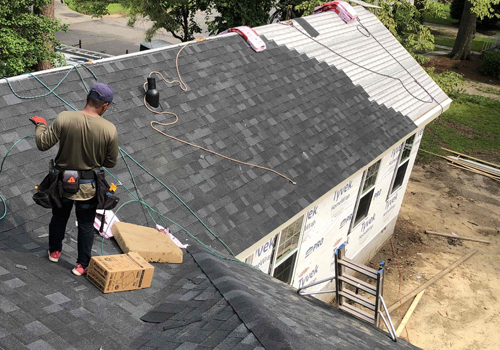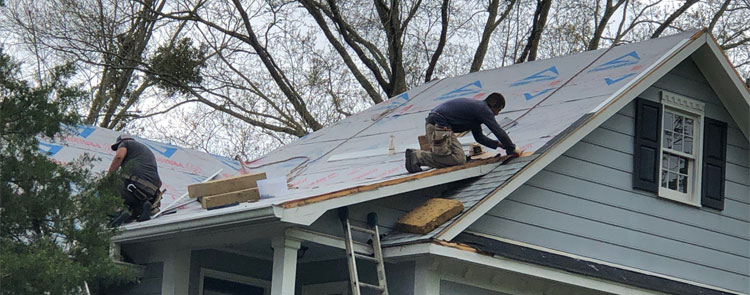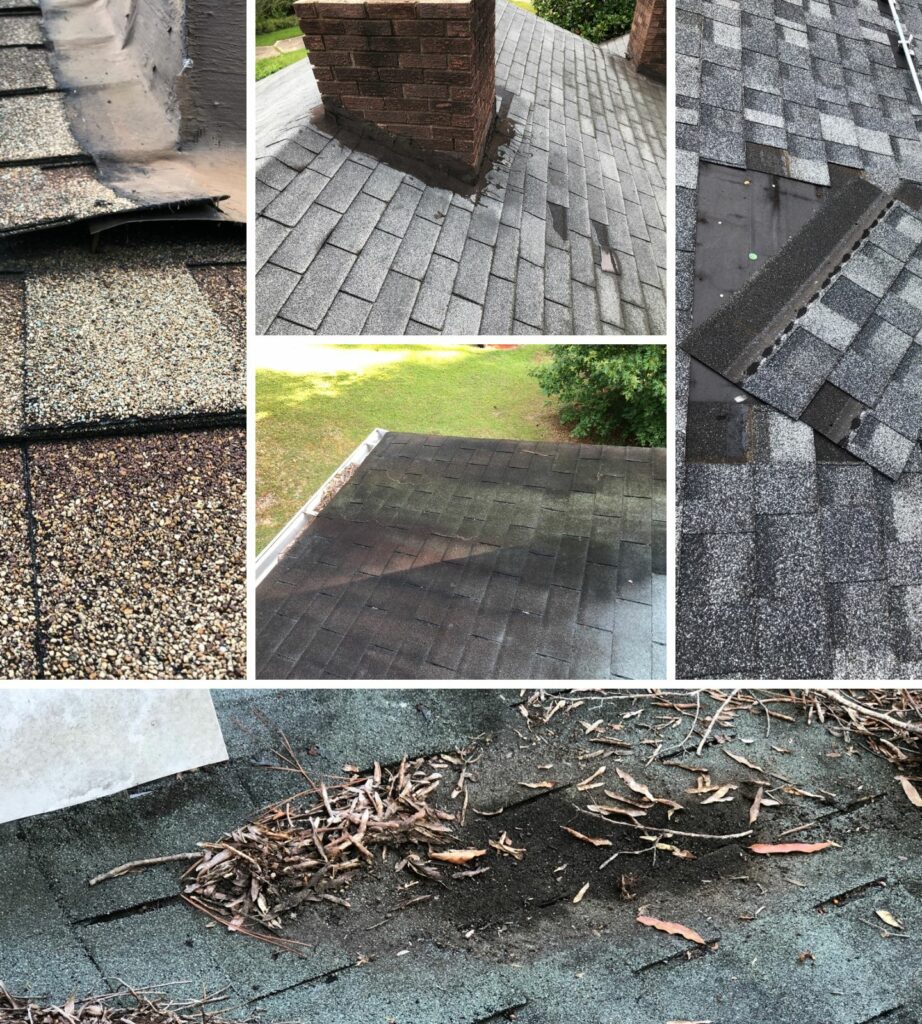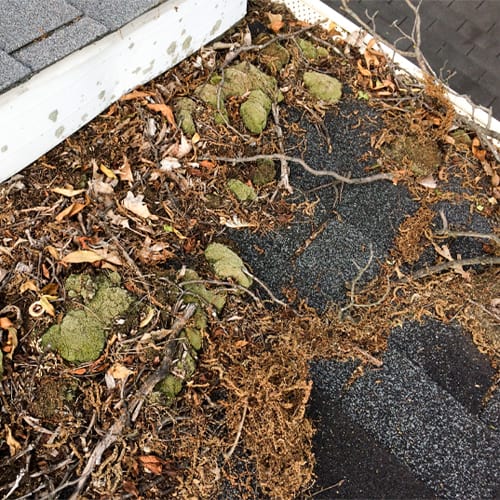How often does a roof need to be replaced?
It’s easy to think of roofs as permanent since year after year they stoically handle the worst that mother nature can throw at them. However, no matter what type of roof you have or how well it was installed, all roofs will eventually need to be replaced.
The exact lifespan of your roof depends on several factors, such as the roofing material, climate, and maintenance practices, as well as a bit of luck. This article will examine the expected lifespan of common roofing materials as well as offer advice on how to get the most life out of your current roof system.

Average lifespan of a roof
Asphalt Shingles
Three-tab asphalt shingle roofs are the most common type of roof in the United States and offer a good mix of performance and price. Cheaper brands may provide 15 to 20 years of life, while premium brands may last up to 30 years.
A shingle’s warranty length is a good indicator of how long you should expect it to last – although keep in mind that premium brands like GAF may require certified installers in order to qualify for the full duration of their warranty.
Architectural Shingles
Architectural shingles are a variety of asphalt shingle that are considerably thicker, creating a unique textured look on your roof. Due to their additional thickness, architectural shingles generally provide longer life than their thinner 3-tab shingle counterparts.
Expect to get 30 years of life from most architectural shingles.
Slate Roofing
Slate roofs are probably the most durable roofing material available and provide incredible character and beauty. These roofs are very heavy and not appropriate for all structures – but once installed they will provide lifetimes of protection.
A slate roof should last 75 to 200+ years when well maintained.
Wood Shingles
Wood shingles offer striking looks and straightforward installation. These shingles are saw cut, making each a consistent size and thickness. Because they are made out of natural materials, wood shingles are susceptible to rot when not cared for properly.
Wood shingles can be made of different species of wood, with cedar offering the longest life. A well-maintained cedar shingle roof should provide 30 years of service.
Wood Shakes
Wood shakes are very similar to wood shingles, except instead of being saw cut and uniform, they are typically hand split, resulting in an irregular surface finish and a tapered thickness. Generally, wood shakes are thicker than wood shingles, which results in a slightly longer lifespan.
Just like wood shingles, deferred maintenance will vastly reduce wood shake lifespan. When properly maintained, cedar shake roofs can last upwards of 40 years.
Metal Roofing
Metal roofs come in a few different types – with standing seam metal roofs being one of the most common residential choices. These roofs should provide 50 years of service. Keep in mind that these roofs often have a painted finish which will usually begin to fade well before the end of the roof’s lifespan.

Factors that affect the lifespan of your roof
Inclement Weather Conditions
All roof materials are designed to withstand your typical thunderstorm, but severe weather events like high winds, hurricanes, tornadoes, and hail can cause damage which reduces the lifespan of your roof. Storms can also cause damage by causing tree limbs to fall onto your roof. Whenever possible, try to limit the number of branches overhanging your roof.
Always inspect your roof after severe storms and if anything looks amiss contact a reputable local roofer to have the damage appraised.
Climate
Extreme temperatures and intense sunlight will eventually break down even the toughest materials. The hardest conditions are experienced in areas which have harsh summers but still encounter freezing temperatures in the winter.
Slope of Roof
Shallow pitch roofs are prone to drainage problems and may suffer shorter lifespans as a result. This is not universally the case, and when installed properly a shallow roof can still deliver decades of useful life.
Poor Installation
Quality installation is essential for getting most life from your new roof, regardless of which material you’ve chosen. Make sure to do your due diligence when choosing a roofing company. Check reviews and resist the temptation to go with the cheapest possible option.
Shoddy workmanship can result in significantly reduced life expectancy and severe installation problems may void your roof’s warranty!
Deferred Roof Maintenance
Just like your car, roofs need regular maintenance to stay at their best. The exact maintenance interval will vary depending on what type of roof you’ve got on your home, as well as your climate and local conditions. However, typically you should have a roofer inspect your roof every 5 to 7 years, or after a severe storm where you see signs of damage.

Signs that your roof needs to be replaced
Frequent leaks
While it isn’t unheard of for otherwise healthy roofs to leak from time to time, if you are frequently having leaks repaired it might be a sign that you simply need a full roof replacement.
Water stains
If parts of your roof remain discolored after a heavy rain then this is a sign that water is getting trapped underneath your shingles. If you act fast, this problem may prove fixable, however pooled water can quickly cause wood to rot and mold to grow.
Missing shingles/Excessive granule loss
If a single shingle goes missing after a storm, this isn’t necessarily a sign that your roof is failing – but if you have an older roof with several missing shingles then you may need more than roof repair!
Similarly, if you see some roof granules in your gutters that is nothing to be alarmed about. However, if you suddenly notice an influx of these pebble-sized stones, then you should begin researching reputable roofing contractors.
How to extend the lifespan of your roof
The most important maintenance to perform on your roof is water management. Overflowing gutters or piles of leaves trapped against eaves and roof valleys results in water damage.

Additionally, you should keep trees and shrubs trimmed away from your home and make sure that your attic is properly ventilated to prevent humidity from building up and causing mold growth. Roof inspections should be conducted regularly to detect and address problems before they become serious.
Decades of Protection
Your roof protects your home day and night from the elements. With a bit of care and attention, most roofs will provide decades of service – but eventually even the most robust materials will break down and need replacement.
A high quality roof installation is essential for getting the most lifespan from your roof – so be sure to choose a professional roofing company with a good reputation! Always check reviews first, and keep in mind that cost cutting today might result in premature replacement in the future!
